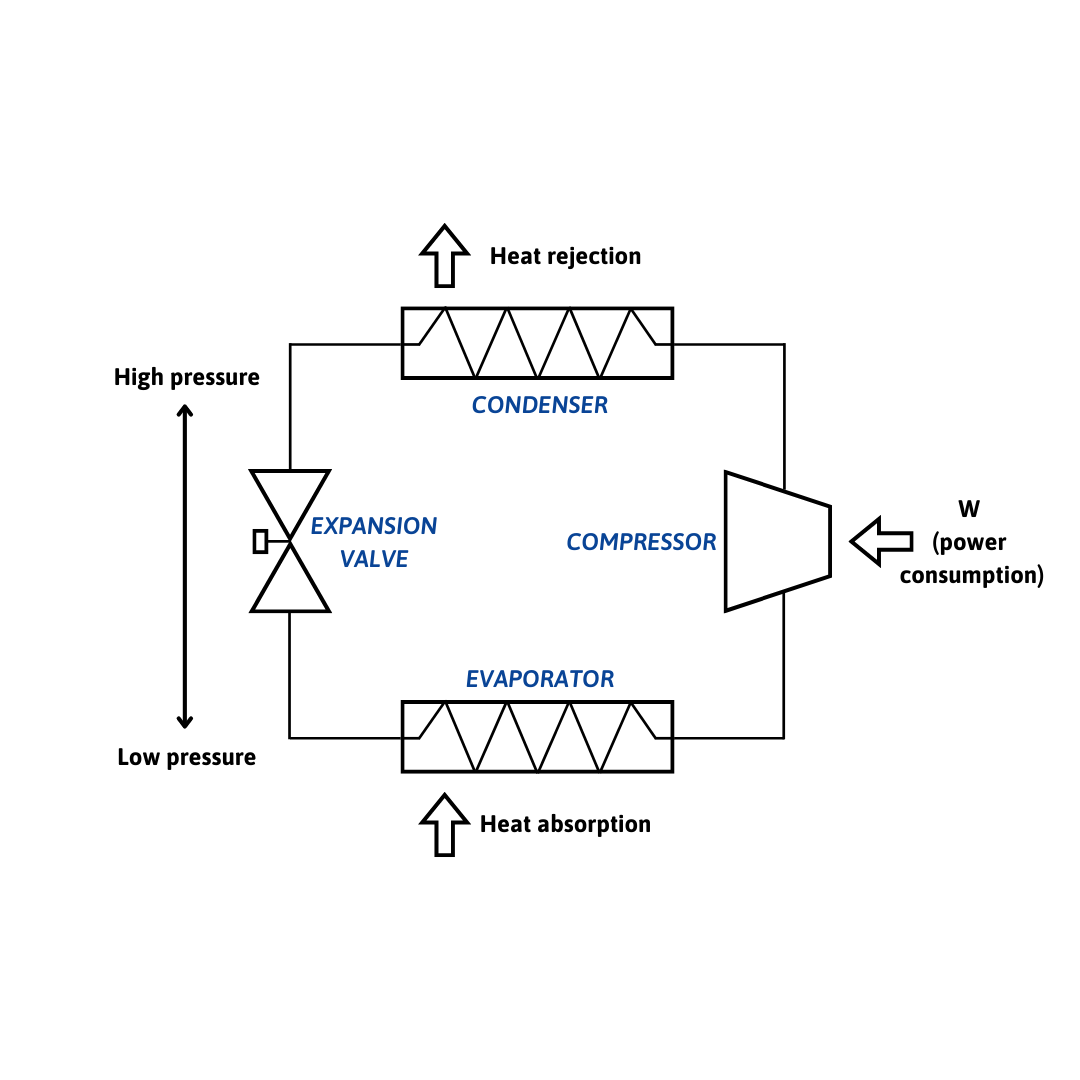A recirculating chiller is a system composed of two main
loops or circuits:
- The refrigerant circuit
- The coolant circuit
The refrigeration circuit is the sub-system within the
chiller that provides the cooling engine. It is within this circuit that thermodynamic
processes occur.
The water circuit is where heat transfer occurs and is a
distribution system for heat transfer fluids.
The Refrigeration Circuit

The refrigeration circuit in a recirculating chiller works
under the principle of a vapour compression cycle. Moving through the cycle,
the refrigerant changes from gas to liquid, and returns to gas again. The
stages of this cycle are explained below:
Compression
At the start of the cycle, the refrigerant is in a low-pressure
vapour state, carrying heat absorbed from the evaporator. At this stage, the
refrigerant is at the same temperature as the ambient air or environment.
The compressor pressurises the vapourised refrigerant by
expending mechanical energy, which is then discharged to the high-pressure side
of the system. When under high pressure, the temperature of the refrigerant
becomes higher than the temperature of the ambient air or environment.
Condensation
The condenser is in the high side of the refrigeration
circuit and is a heat exchanger used to transfer heat from the refrigerant to
the environment. Due to the thermal gradient existing between the refrigerant
and the environment, heat transfer is able to take place and both heat absorbed
by the evaporator and heat generated by the compressor are discharged. The
environment acts as a heat sink, absorbing the rejected heat. In recirculating
chillers, this ‘environment’ is the water circuit.
As the refrigerant is cooled within the condenser it returns
to a liquid state.
Expansion
To begin with the liquid refrigerant is in a high-pressure
state with the same temperature as the ambient environment. Expansion is
usually achieved by passing the refrigerant through an expansion device such as
a thermal expansion valve or capillary tube. During the expansion process, the
refrigerant lowers its pressure. As the pressure drops, as does the temperature
of the refrigerant. A small amount of refrigerant may flash, or turn into
vapour, further lowering the temperature of the refrigerant. In theory, this
process happens without the transfer of heat or energy.
Refrigerant then flows into the low-pressure side of the
system.
Evaporation
The evaporator is on the low-pressure side of the system.
Here, heat exchange between the refrigerant and the heat transfer fluid takes
place. The refrigerant absorbs heat from the heat transfer fluid, elevating the
temperature of the refrigerant until it vaporises. Following this process, the
refrigerant is in a low-pressure state with a temperature the same as the
ambient environment.
The refrigerant then flows into the compressor for the cycle
to start again.